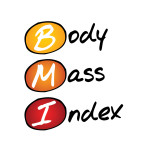 You may have learned about BMI in health class, heard your health care provider talk about BMI, or gotten a BMI report card from your school. BMI, short for body mass index, is getting a lot of attention lately because some schools in the United States are measuring students BMI and sending home BMI report cards.
You may have learned about BMI in health class, heard your health care provider talk about BMI, or gotten a BMI report card from your school. BMI, short for body mass index, is getting a lot of attention lately because some schools in the United States are measuring students BMI and sending home BMI report cards.
What is Body Mass Index (BMI)?
BMI is a ratio of a person’s height and weight. It does not measure body fat, but can be an indicator of body fatness. Everyone needs some body fat, but having too much body fat can put a person at risk for health problems such as high blood pressure and diabetes. Having too little body fat is also unhealthy.
How is BMI measured?
BMI is a mathematical calculation of your weight (in pounds) times 703 divided by your height (in inches) squared. You can figure out your BMI on your own using the formula below:

You can use online calculators to figure out your BMI: Children and Teens (age 2-19) and Adults (age 20+). But it’s best to ask your health care provider or school nurse for this information to make sure your height and weight are measured correctly.
What does my BMI mean?
If you are under the age of 20, once your health care provider or school nurse calculates your BMI, they must use a special chart to convert this number into a percentile. Your percentile tells you how your BMI compares with other teens your age and gender. This is based on a growth chart. Your health care provider can tell you if your BMI percentile falls into the underweight, normal weight, overweight or obese category.
No matter what your BMI percentile is, it’s important to ask if it’s changed over the last couple of years. Although BMI can change when you’re growing or going through puberty, teens should ideally stay at about the same BMI percentile during their teen years. If your BMI percentile changes a lot either up or down, you should talk to your health care provider about possible reasons for the change. For people 20 years and older, BMI is compared against all other adults; healthy ranges do not differ by age or by gender and are no longer given in percentiles.
What is a BMI report card and what is it used for?
Some schools in the United States are checking weights and heights of students at school, calculating BMI, and sending this information home to parents as a BMI report card. The controversial report cards are used to identify teens who are underweight, overweight, or obese. Teens who fall in any of these groups may be at a higher risk for weight-related health problems.
What if my BMI is high?
Talk to your health care provider about whether you should be concerned about your BMI and about healthy ways to manage your weight. Keep in mind that BMI is just an estimate of body fat. Most teens who have a BMI in the overweight or obese category have a high amount of body fat, but there are some who don’t. This is true for muscular teens (especially those who exercise or are very athletic and toned). Their weight may be higher because of extra “muscle mass” and not because of extra body fat.
What if my BMI is too low?
Talk to your health care provider about whether you should be concerned about a low BMI percentile. They will likely look at your growth chart to see if you have been following roughly the same percentile as you have grown, or whether the percentile has dropped. Have a BMI classification of underweight can put you at risk for health complications such as a weakened immune system. It might also mean that you are missing out on key nutrients in your dietary intake.
If your BMI is falls in the underweight, overweight, or obese category, you should see your health care provider. He/she can check to see if you are at risk for getting any health problems and help you work on a healthy weight management plan, if needed.
If you’re concerned about your BMI, here’s a tip on how to bring it up with your health care provider: I got my school health report and my BMI said I was overweight (or underweight), what do I do?
Source: Read Full Article
